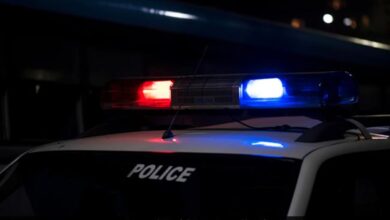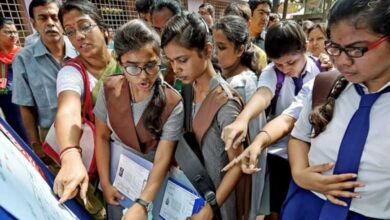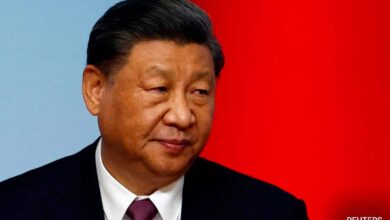25th edition of Kala Ghoda Arts Festival: How Asia’s largest street festival revitalised a neighborhood | Mumbai News
Once home to the illustrious Sassoon family and later the congregation point of artists, musicians and poets, Kala Ghoda was a hub for business, culture, and education in the 19th and 20th century. This crescent-shaped South Mumbai quarter also witnessed construction of architectural marvels like the David Sassoon Library, Army & Navy Building, and the Prince of Wales Museum (now Chhatrapati Shivaji Maharaj Vastu Sangrahalaya) featuring Gothic Revival, Neoclassical, and Indo-Saracenic styles.
However, Kala Ghoda’s charm waned over time, and by the late 20th century, the area took on a deserted and dilapidated look post office hours. “It was a dead place, dark and dingy. I remember there used to be call girls in the corridor of Elphinstone College. There were druggies hanging out close to where the amphitheater is now. But there was still a lot of interest—lovely restaurants, Rhythm House, Thacker’s bookstore, and even Jehangir Art Gallery’s famous Samovar cafe,” recalled Brinda Miller, chairperson of the Kala Ghoda Association.
The transformation began 26 years ago when a small group of art and heritage enthusiasts launched an arts and culture festival aimed at revitalising the heritage arts district. What started as a modest effort has grown into Asia’s largest multidisciplinary street arts festival—the Kala Ghoda Arts Festival (KGAF),which has been held annually since its inception in 1999, with the exception ofKala Ghoda 2022. “We moved the 2021 edition online, hoping to return on-ground the following year, but another wave hit. Organising the festival takes tremendous effort, so we decided to forgo the 2022 edition altogether, making this the 25th edition,” Miller explained.
 Miller said the festival was conceived to spotlight the area’s stunning neo-Gothic buildings, Victorian ensemble, and Art Deco structures. (Express Photo By Ganesh Shirsekar)
Miller said the festival was conceived to spotlight the area’s stunning neo-Gothic buildings, Victorian ensemble, and Art Deco structures. (Express Photo By Ganesh Shirsekar)
Scheduled from January 25 to February 2, the festival promises over 400 programs across 25 venues, encompassing music, arts, dance, theatre, literature, cinema, food, heritage walks, stand-up comedy, and children’s events. A standout feature this year is a series of 25 horse installations commemorating the festival’s silver jubilee.
Humble beginnings
The inaugural Kala Ghoda Arts Festival in 1999 was a modest endeavor. “We began with a small group organising 30 events over 14 days,” Miller shared, adding the festival was conceived to spotlight the area’s stunning neo-Gothic buildings, Victorian ensemble, and Art Deco structures. “We also decided to channel leftover funds from the festival into restoring heritage monuments. Over the years, we’ve restored the David Sassoon Library, the Clock Tower, Muljee Jetha Fountain, Keneseth Eliyahoo Synagogue, and Police Courtyard Café, among others. Currently, we’re working on the facade of Elphinstone College. Many of these structures are receiving attention because of the revival movement we initiated. We built the amphitheater on the street and brought Westside to the Army & Navy Building, which was previously neglected. Even Esplanade House is undergoing restoration. While the festival has outgrown these efforts, it’s important to remind people of the work we do,” she said, adding that their early advocacy for the pedestrianisation of Kala Ghoda is now taking shape with support from the Brihanmumbai Municipal Corporation (BMC).

With time, the festival has also expanded its footprint. “Initially, events were held on the streets and in two art galleries. Now, the festival has expanded venues like Cross Maidan, David Sassoon Library, NGMA, and CSMVS. Music grew so much that we even hosted it at Azad Maidan for a year before returning to Cross Maidan,” noted Miller’s whose association with KGAF began as a member of the audience during the debut edition. Captivated by the experience, she reached out to Sangita Jindal, one of the festival’s founding members, to volunteer. “At first, she didn’t take me seriously, but after I persisted, I was asked to work on a collaborative art project. Two years later, I joined the committee,” she recalled.
Free for all
KGAF stands out for its non-commercial approach — all events are free, making it accessible to everyone. “People can watch Farhan Akhtar perform or enjoy a tribute to Zakir Hussain without paying a rupee,” Miller said, adding that this inclusivity has transformed the festival’s audience over the years. “Initially, it was somewhat elitist, but we later decided to make it democratic. Today, college students make up the largest share of the crowd. It’s become a fun hangout spot,” she observed.
 KGAF continues to evolve, with 15 verticals catering to diverse interests. (Express Archive Photo)
KGAF continues to evolve, with 15 verticals catering to diverse interests. (Express Archive Photo)
Despite occasional discussions about introducing paid tickets, the team has remained committed to keeping the festival free. “Charging would complicate things with permissions, taxes, and the overall spirit of the festival. The government has supported us because we’re free and inclusive,” Miller explained.
Challenges and triumphs
From legal battles over noise and restrictions on using public spaces to heightened security post the 2008 Mumbai attacks, KGAF has faced its share of challenges. “After the attacks, we had to introduce stringent security measures like Digital Multifunction Detectors. This improved the crowd quality, but managing queues became a new challenge,” Miller recalled.
Funding is another perennial hurdle. “Arts never get enough funding. While we’ve had consistent support from sponsors, we’ve always had to work hard to secure the next year’s budget,” she admitted. Despite these struggles, the festival’s well-behaved and appreciative audience keeps the team motivated. “Mumbai’s audience is incredible. They thank us for our work, which makes it all worthwhile,” she said.
Looking ahead
KGAF continues to evolve, with 15 verticals catering to diverse interests. Music remains the most popular segment, followed closely by visual arts. “Music is our most expensive segment, requiring top-notch stage, sound, and lighting setups. But what makes KGAF special is the unique blend of street art, installations, and performances you won’t find elsewhere,” Miller shared, adding that newer verticals like stand-up comedy have also gained traction.
This year, the festival introduces a lifestyle segment covering fashion and wellness. Miller emphasised that while the festival adapts to contemporary trends, it remains rooted in its mission to celebrate and preserve Mumbai’s heritage. “The festival is bigger than all of us now. It’s a labor of love, and we’re proud to see how it has transformed the area and brought people together,” Miller signed off.
The festival starts on Saturday, full schedule on kalaghodaassociation.com.







